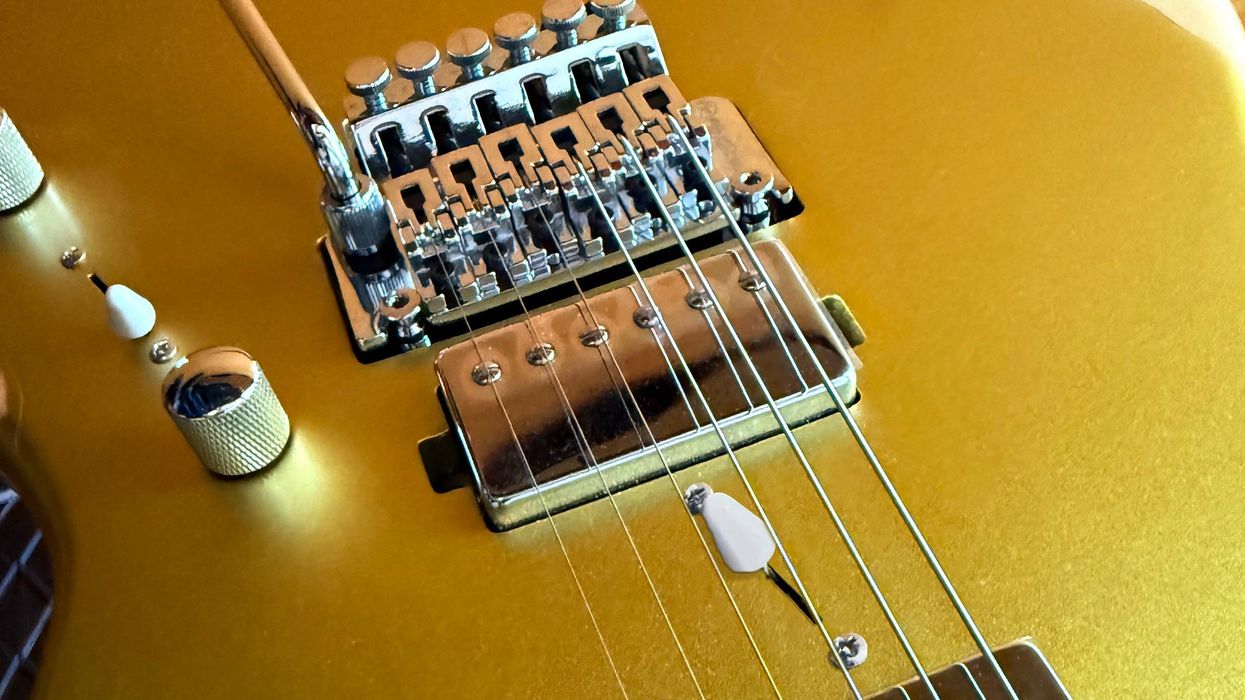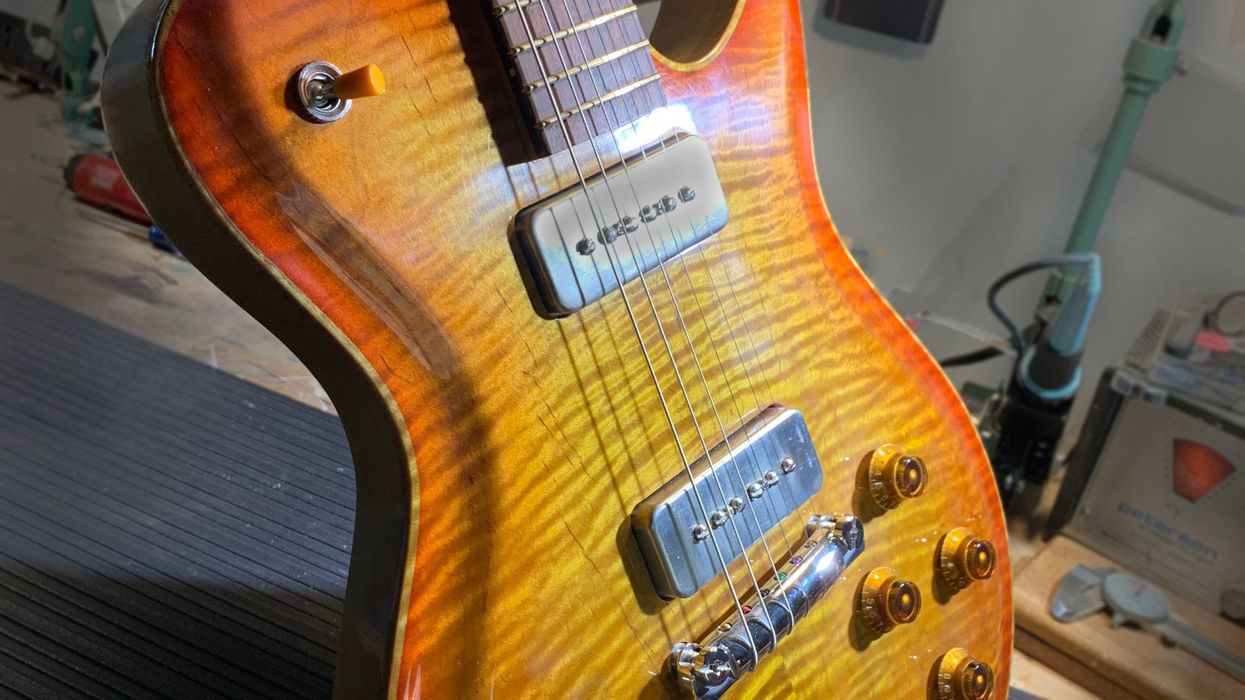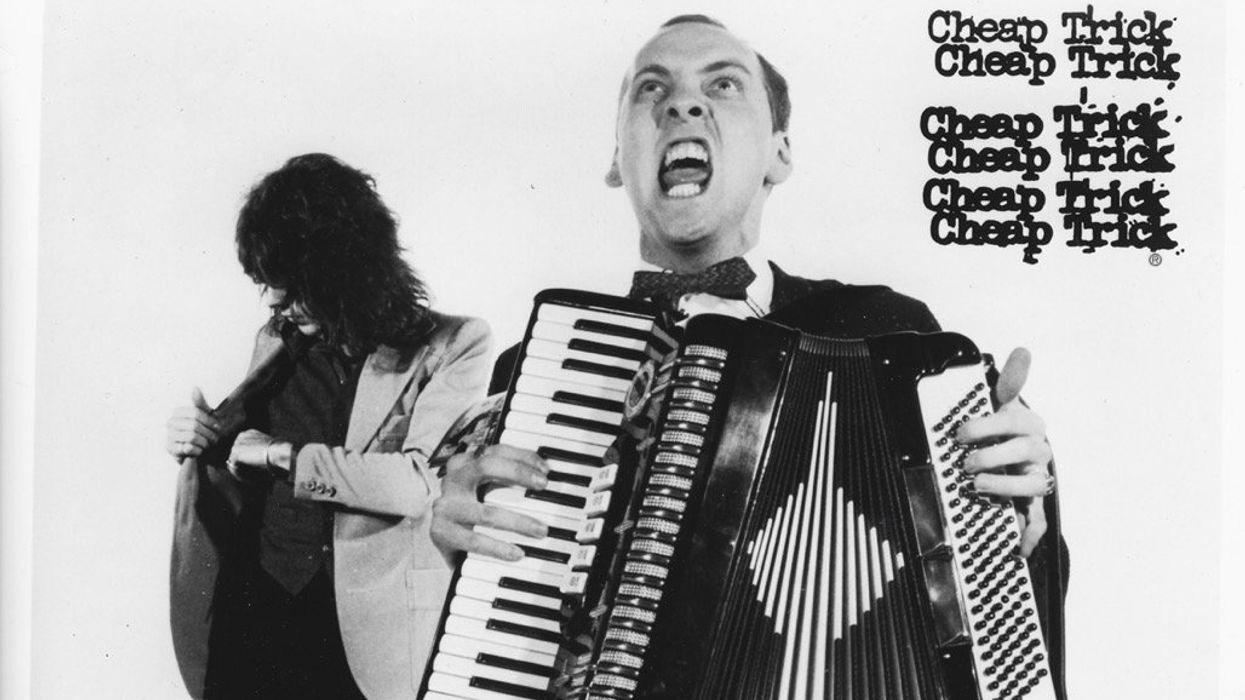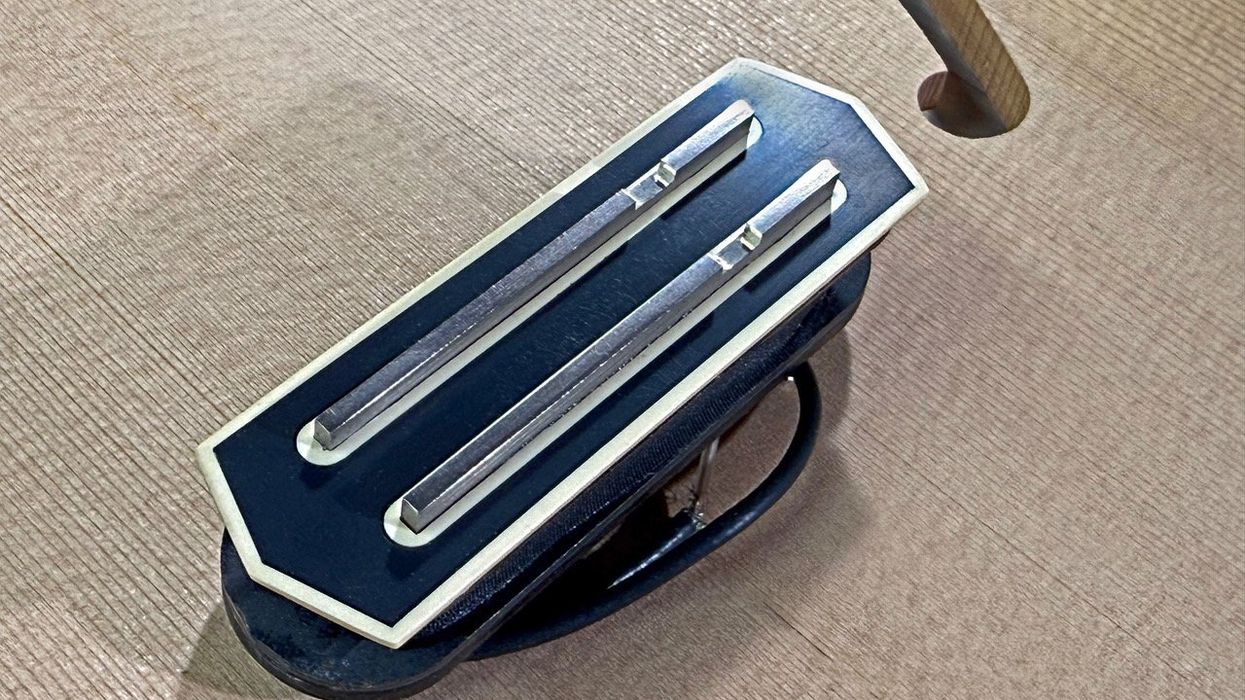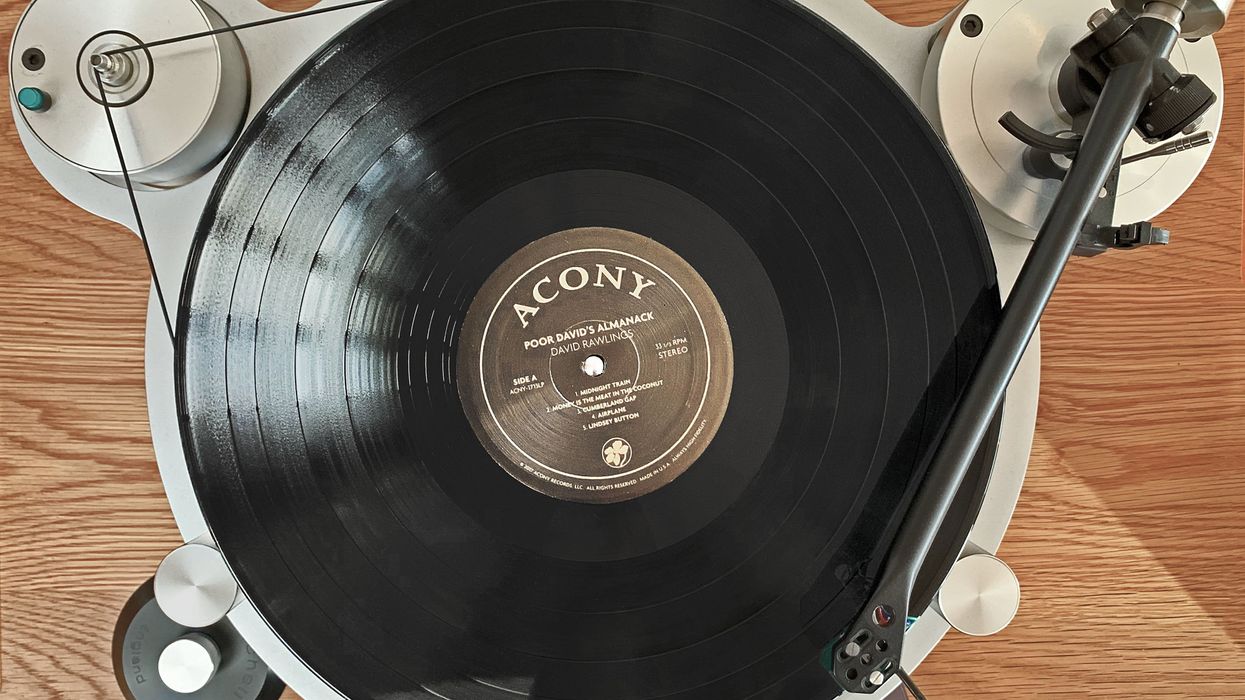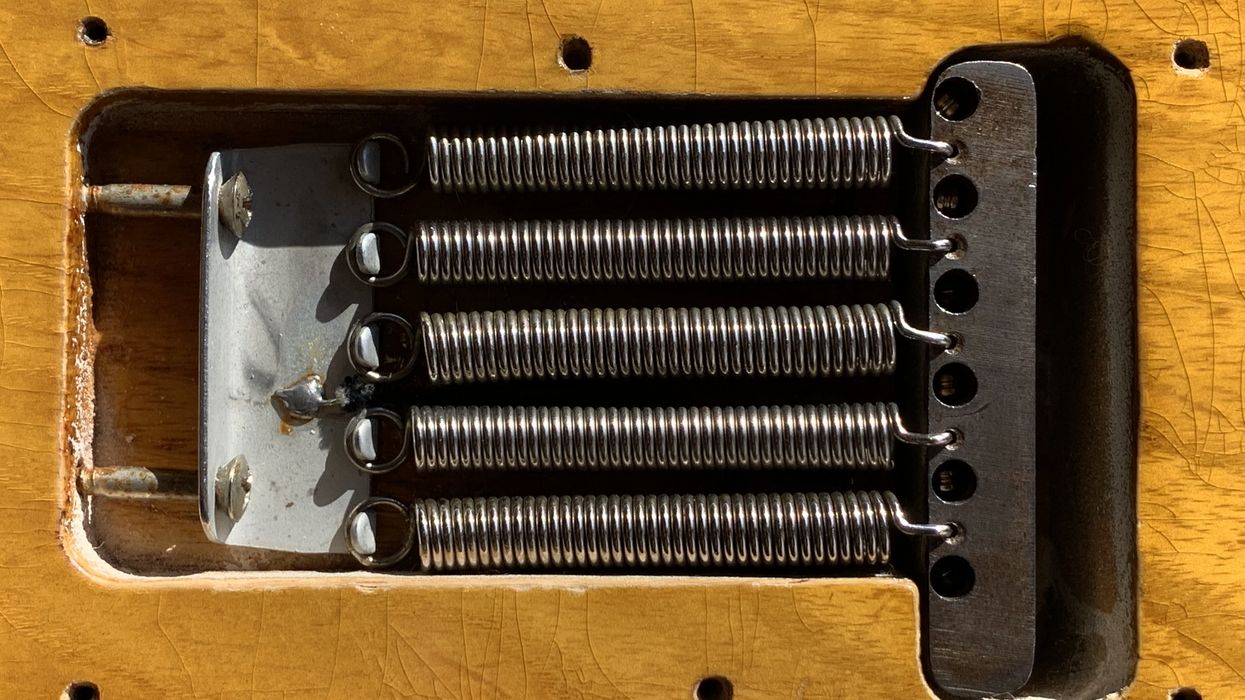Who doesn't love Yoko Ono? As one of the champions of microtonal music, she was pushing the boundaries of vocal gymnastics long before Auto-Tune was invented and subsequently abused. But it has come to my attention that there are haters as well. What does this have to do with guitars? I understand the raised eyebrows, but allow me to get into the weeds a bit and eventually I'll get to that.
Western music, which is the framework for what most of us play, is based on a 12-notes-per-octave system. When we whistle a children's tune like "Mary Had a Little Lamb" or play the riff to "Crazy Train," we're pulling from the same group of notes and intervals. Outside of the Western framework is a whole other garden of musical expression where octaves are divided up into smaller subdivisions. Michael Bloomfield utilized influences from various musical traditions in his soloing. While some called it groundbreaking, others held their ears. Similarly, Hound Dog Taylor's pitch-challenged riffing isn't to everyone's taste. It all depends upon how open you are to sound as art. Personally, I dig it.
But there is another facet of intonation that has grown on me, and that is the slightly off-pitch content of the guitar in general. In a way, it's what makes the instrument so unique and wonderful. Among other reasons, the guitar relies upon a single fret position to determine pitch across six differently weighted and tensioned strings, and "perfect" intonation is not possible. Over time, guitarists learn to subconsciously vary finger pressure even within chords to "smooth out" intonation inconsistencies to their liking. This is why my first guitar teacher could play my guitar in tune, then hand it back to me, and in my hands the sound wilted.
Learning to deal with intonation on the guitar is a rite of passage that some players master better than others. The good thing is sometimes a little microtonal content can make music interesting. One of my favorite examples is the main riff in Led Zeppelin's "Whole Lotta Love." As Page drones the open 4th string against the slightly bent D note fingered on the 5th string, magic happens.
Outside of the Western framework there is a whole other garden of musical expression where octaves are divided into even more intervals.
Consider Roger McGuinn's rambling 12-string odysseys on early Byrds recordings. His jazz-influenced improvisational wanderings combined with the inherent string-to-string discrepancies built into his Rickenbacker's design gave McGuinn a signature voice. As an owner of one such instrument, I struggle with the desire to replace its 6-saddle bridge with a 12-saddle version, but worry that I'll miss that crazy Rick sound. I've built 12-string electrics that intonate as close to perfectly as one can get. They are glorious to play but have enough of that slightly microtonal signature that a less sophisticated approach renders. In the end, they're both viable methods, depending upon the music.
The Tune-o-matic bridge stands as the de facto solution to guitar intonation, but my experience is that the Tune-o-matic is just a different compromise between where your guitar is in tune, at the expense of some solid tone. I actually prefer a wraparound bridge and don't find that it impedes seasoned players at all. Similarly, there are compensated nuts that solve some intonation issues while not addressing others. I had a guitar with wavy frets that basically provided micro-adjusted fretting points for each string. When compared to a keyboard, it was quite accurate, but it sounded slightly weird to my ears—like a computer simulation of a guitar, without all the color. Open-G tuning on this instrument absolutely did not sound like Keef. I have another guitar with those wavy frets at the first and second positions, which is actually pretty useful if you need that open D chord to be more in tune.
Years ago, I was at the Lone Star Cafe in New York City, sitting, drinking, and chatting with guitarist Elliott Easton and producer Jon Tiven. On the lower level, a local band was doing a cover of the Rascals' "Good Lovin'," and I was barely paying attention. Then, as the guitarist played the little chord/riff break after the first verse, my head spun around because the slightly bent notes were exactly like the Rascals' version. "Jesus, he nailed that," I said to my companions. "Well, he should," Easton replied. "He's Gene Cornish!" The signature touch of Cornish's fingers made that song as much as anything else on the original recording. I doubt if more perfect intonation would have improved it.
There have been many inventions that seek to iron out the kinks and quirks of a guitar's limitations, but sometimes embracing them can be more satisfying. Like our friend Yoko—love them for what they are. And remember, if the grass seems greener on the other side, water your own lawn.



